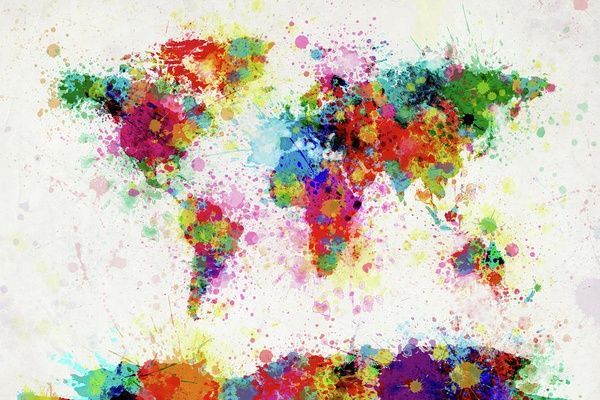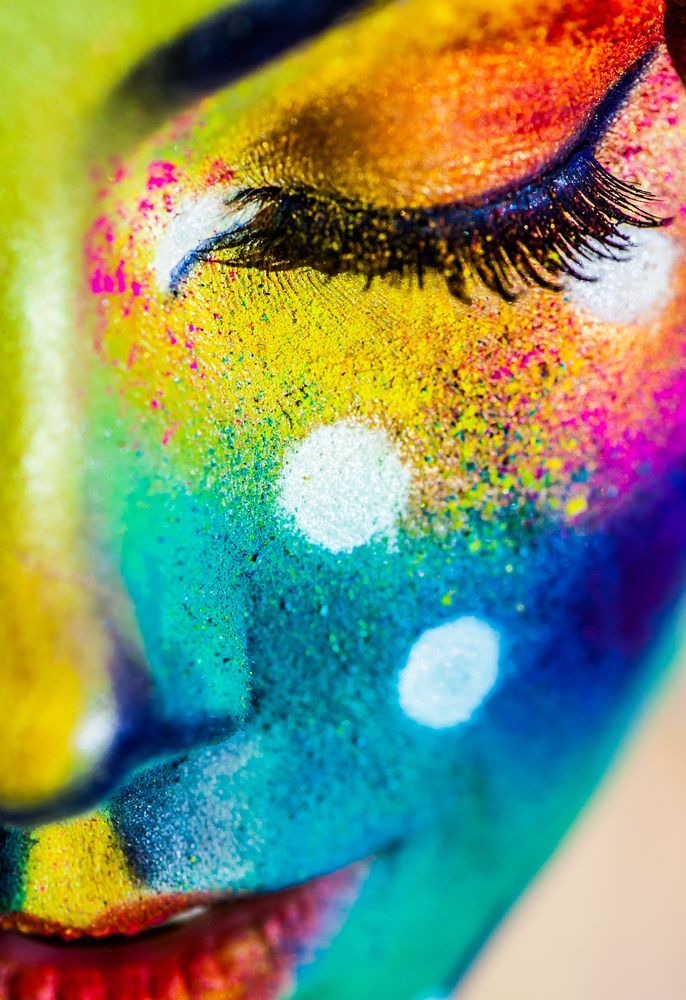Paint This World !
Mar 22, 2019 • 34 views
"If Winter comes ,can Spring be far behind"

Holi is a festival celebrated widely all over the world . We Indians associate this festival with the arrival of spring (Basanta) and departure of the winter season. Well known as the 'Festival of Colours' as the trees blossom will flowers and leaves grow afresh after the dull winter. Nature seems to celebrate the arrival of spring in it's own unique way . As nature is an omnipresent component of the world , so is the celebration of Holi. There might be alterations made according to the regions which celebrate the festival , but the spirit remains the same .
The Indian festival of Holi has gained prominence in regions where the Indian diaspora were transferred as indentured labourers during the colonial rule or emigrated independently .

Indonesia:
In the country of South- East Asiatic origin , the Indian Indonesians, and the Hindu community celebrates 'Holi' in the traditional Indian manner. Dry colours(gulal), and folk dances are integral parts of the festival.
Suriname:
The name given to the festival of colours in Suriname, situated on the North-Eastern Atlantic coast of South America is 'Phagwa'. on this special day it is a custom to wear old white clothes and participate in the celebration, by throwing colours at each other . 'Phagwa' is a colour carnival ,much like the Tomatina festival of Eastern Spain .

Guyana:
The third smallest sovereign state of Guyana , situated on the Northern mainland of South America, and considered a part of the Carribean community celebrates 'Phagwa' in a traditional manner . It is customary to wish each other "Happy Phagwah!" and dousing each other with buckets full of water and spraying colours from the water guns. The men from the Hindu communities walk around the villages singing chowtaal(songs associated with the festival.) while the women are usually at home preparing Indian delicacies such as gulaab jamoon, gojha, gul-gula, pholourie, etcetera.
Trinidad and Tobago :
The twin island country of Trinidad and Tobago situated on the southernmost tip of the West Indies in the Carribean , celebrate 'Phagwa' on a Sunday closest to the actual date.'Phagwa' incorporates aspects of the Indian mythical story of Prahladh and an effigy of Holika is burnt as a symbol of purification. Another aspect of the festival includes plenty of joyful singing and dancing.A Carnival-like atmosphere pervades as willing participants are sprayed with a variety of coloured dyes.The strains of special folk songs called Chowtal being sung can be heard, accompanied by two instruments , namely the Dholak, (a small hand drum )and Majeera,(a metal percussive instrument
).The music is high in tempo and extremely infectious,'Phagwa' celebrations take place throughout Trinidad and Tobago.
Fiji:
Holi, in the volcanic islands of Fiji,located on the South Pacific is celebrated by the Indo- Fijians with folk songs and dances .These folk songs were called the "phaag gaaian". "Phagan" , also written as "phalgan" or "Phalgun" is considered the last month of the Hindu Calendar. It is considered to be a season of romance. The celebration of Holi is woven around the theme of love , as depicted in the amorous mythological tales of Lord Krishna and his consort Radha. The ritualistic play of colours , along with the occassional dancing and singing unites the Fijians on this auspicious occassion .
Mauritius:
The island nation of Mauritius, situated in the Indian Ocean celebrates Holi regardless of religion. Colours are used inside buildings or in doorways, and are sprayed on each other as a gesture of celebration. Traditionally, colours derived from plants are used instead of the ones treated with chemicals. Holi without sweets is considered incomplete, hence the highlight of Holi is the sweet and moreish ‘gujiya’ – a type of dumpling made with suji (semolina) flour, roasted in Ghee and stuffed with nuts, roasted dried fruits, coconut and khoya,( a dairy product similar to ricotta cheese).
Along with this the high spirited singing by a large number of people to the rhythm of the ‘jhal and dholak’ ( cymbals and drums ) intensifies the essence of the festival.

The "festival of colours" believes in the process of uniting rather than discriminating .The celebration of "Holi" or "Phagwa", where colours are sprayed as an act of celebrating the harvest season . Spring is welcomed by mankind with open arms, and the Earth smells of colourful fragrant flowers ,afresh. The universe ,paints itself in a rainbow- like hue , in order to commemorate ,the process of re-nascence.
